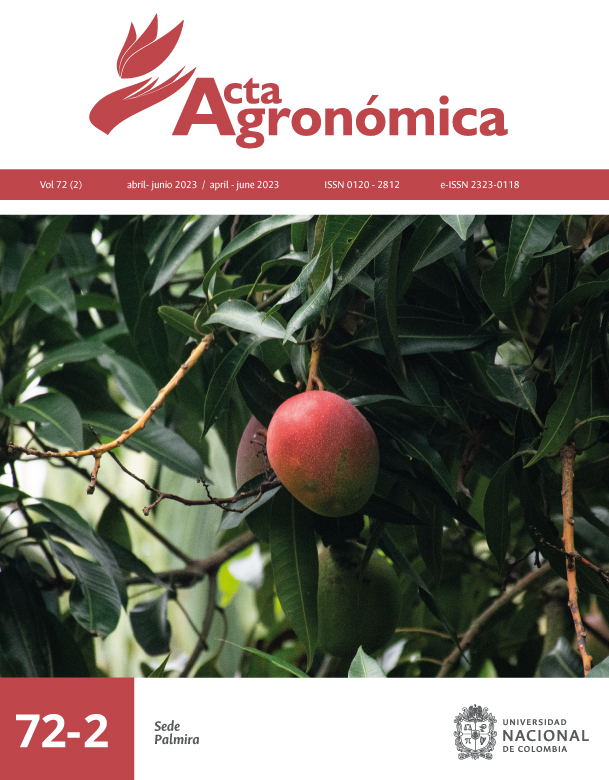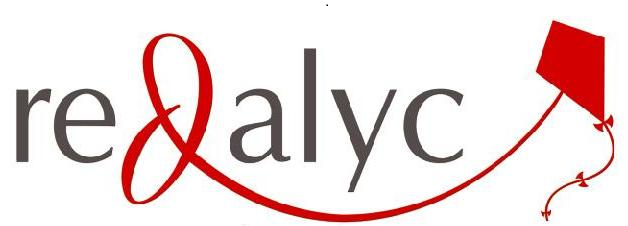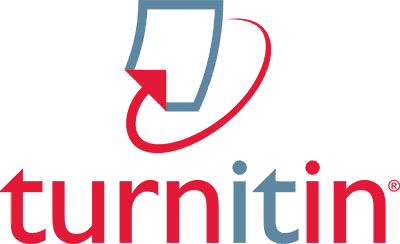Absorbent materials prepared from wastes derived from banana, rice, and cocoa agro-industries, intended for the capture of hydrocarbons
Materiales absorbentes elaborados a partir de residuos de la agroindustria del banano, arroz y cacao destinados a la captación de hidrocarburos
DOI:
https://doi.org/10.15446/acag.v72n2.111928Keywords:
agricultural wastes, dynamic and static conditions, buoyancy, adsoption tests, aqueous medium (en)residuos agrícolas, condiciones dinámicas y estáticas, flotabilidad, pruebas de adsorción, medio acuoso (es)
Downloads
In this study, adsorbent materials prepared from common wastes generated in agricultural industries were evaluated, particularly the adsorption capacity for hydrocarbon compounds. Wastes from banana, cocoa, and rice were collected, and subsequently dried, milled, and chemically treated with NaOH. The physical properties of the treated wastes were assessed, including buoyancy and apparent density, and their adsorption capacity was tested under dynamic and static conditions. The results were subjected to an analysis of variance (ANOVA). The dynamic adsorption tests carried out indicated that the treated waste from banana leaves with a particle size of 1400 µm exhibited a buoyancy percentage above 90 % in the hydrophilic phase, while hydrocarbon compounds were adsorbed in the oleophilic phase. However, traces of hydrocarbons were still visible in the aqueous medium. In the short-term static adsorption tests, the waste materials showed adsorption capacity values ranging from 2.17 to 8.22 g oil/g adsorbent for motor oil; the highest adsorption index was determined in wastes from banana rachis with an 850 µm particle size. Moreover, in the adsorption of diesel and gasoline, the wastes from banana rachis with an 850 µm particle size showed the highest adsorption capacity for diesel (6.61 g diesel/g adsorbent) and gasoline (6.26 g gasoline/g adsorbent). This behavior was also observed in the long-term tests for all wastes tested, except for banana rachis, as some of the adsorbent material subsided, leading to the adsorption of both water and hydrocarbon compounds.
En este estudio se evaluaron materiales adsorbentes preparados a partir de residuos comunes generados en agroindustrias, particularmente su capacidad de adsorción de compuestos hidrocarbonados. Se recolectaron residuos de plátano, cacao y arroz, que fueron secados, triturados y tratados químicamente con NaOH. Se evaluaron las propiedades físicas de los residuos, incluyendo la flotabilidad y la densidad aparente; de igual forma, se probó su capacidad de adsorción en condiciones dinámicas y estáticas. Los resultados se sometieron a un análisis de varianza (ANOVA). Las pruebas de adsorción dinámica indicaron que los residuos tratados de hojas de plátano con un tamaño de partícula de 1 400 µm mostraron un porcentaje de flotabilidad superior al 90 % en la fase hidrofílica, mientras que los compuestos hidrocarbonados se adsorbieron en la fase oleofílica. Sin embargo, se observaron rastros de hidrocarburos en el medio acuoso. En las pruebas de adsorción estática a corto plazo, los materiales de desecho mostraron valores de capacidad de adsorción que oscilaron entre 2.17 y 8.22 g de aceite/g de adsorbente para aceite de motor; el índice de adsorción más alto se determinó en los residuos de raquis de banano con un tamaño de partícula de µm. Además, en la adsorción de diésel y gasolina, los residuos de raquis de banano con un tamaño de partícula de 850 µm mostraron la mayor capacidad de adsorción para el diésel (6.61 g de diésel/g de adsorbente) y la gasolina (6.26 g de gasolina/g de adsorbente). Este comportamiento también se observó en las pruebas a largo plazo en todos los residuos probados, excepto en los residuos de raquis de banano, ya que una parte del material adsorbente se precipitó, lo que llevó a la adsorción tanto de agua como de compuestos hidrocarbonados.
References
Abel, U. A.; Habor, G. R. and Oseribho, O. I. (2020). Adsorption studies of oil spill clean-up using coconut coir activated carbon (CCAC). American Journal of Chemical Engineering, 8(2), 36-47. http://doi.org/10.11648/j.ajche.20200802.11
Abin-Bazaine, A.; Trujillo, A. C. and Olmos-Marquez, M. (2022). Adsorption isotherms: Enlightenment of the phenomenon of adsorption. In Ince, M. and Kaplan Ince, O. Wastewater Treatment (pp. 1-15). London: IntechOpen. https://doi.org/10.5772/intechopen.104260
ASTM. (2012). Standard test method for sorbent performance of adsorbents for use on crude oil and related spills. In: ASTM F726-12. West Conshohocken: ASTM international. https://www.astm.org/f0726-12.html
Bhardwaj, N. and Bhaskarwar, A. N. (2018). A review on sorbent devices for oil-spill control. Environmental Pollution, 243(Part B), 1758-1771. https://doi.org/10.1016/j.envpol.2018.09.141
Chau, M. Q.; Truong, T. T.; Hoang, A. T. and Le, T. H. (2021). Oil spill cleanup by raw cellulose-based absorbents: A green and sustainable approach. Energy Sources, Part A: Recovery, Utilization, and Environmental Effects, 1-14. https://doi.org/10.1080/15567036.2021.1928798
Danglad-Flores, J. A.; Marfisi-Valladares, S.; Cova-Bonillo, A. J. and Linero-Acosta, G. E. (2013). Hydrophobic particles of sugarcane bagasse for the treatment of hydrocarbons in water. Saber, 25(1), 97-103. https://ve.scielo.org/scielo.php?pid=S1315-01622013000100011&script=sci_abstract&tlng=en
Daud, A. H. and Hussin, R. (2023). Kapok (Ceiba Pentandra (L.) fiber for removal of spilled oil. Progress in Engineering Application and Technology, 4(1), 495-504. https://publisher.uthm.edu.my/periodicals/index.php/peat/article/view/10237
Díaz-Díaz, M. A.; Rivas-Trasancos, L.; León-Barrios, M. and Acosta-Sánchez, J. (2018). Adsorbent material to pick up oil spills in water and soils. Revista Cubana de Química, 30(2), 289-298. http://scielo.sld.cu/scielo.php?script=sci_arttext&pid=S2224-54212018000200010
Guilcamaigua-Anchatuña, D. X.; Quintero-Quiñónez, N.; Jiménez-Cercado, M. E. and Muñoz-Naranjo, D. (2019). Absorción de aceites y grasas en aguas residuales de lavadoras y lubricadoras de vehículos utilizando absorbentes naturales. 3C Tecnología. Glosas de innovación aplicadas a la pyme, 8(3), 12-23. http://doi.org/10.17993/3ctecno/2019.v8n3e31.12-23
Gupta, N.; Mahur, B. K.; Izrayeel, A. M. D.; Ahuja, A. and Rastogi, V. K. (2022). Biomass conversion of agricultural waste residues for different applications: A comprehensive review. Environmental Science and Pollution Research, 29, 73622-73647. https://doi.org/10.1007/s11356-022-22802-6
Mahmoud, M. A. (2020). Oil spill cleanup by raw flax fiber: Modification effect, surprise isotherm, kinetics, and thermodynamics. Arabian Journal of Chemistry, 13(6), 5553-5563. https://doi.org/10.1016/j.arabjc.2020.02.014
Martínez-Altamirano, M. E. and Flores, R. (2014). Remediation of water contaminated with petroleum with Pennisetum clandestinum as biosorbent. Revista Ambiens Techné et Scientia México, 2(1), 41-47. https://ambiental.unam.mx/albunimagenes/Revista/2014%20Vol%202%20Num%201%20ATSM.pdf#page=41
Méndez-Tovar, M.; Machado-Soberanes, J. A. and Guerra-Sánchez, R. (2012). Comparative study of hydrocarbons adsorption capacity for five adsorbent materials type II using a standardized international method: A comparative study. Tecnología, Ciencia, Educación, 27(2), 94-100. https://www.redalyc.org/pdf/482/48230177006.pdf
Patalano, A.; Villalobos, F.; Pena, P.; Jauregui, E.; Ozkan, C. and Ozkan, M. (2019). Scaling sorbent materials for real oil-sorbing applications and environmental disasters. MRS Energy & Sustainability, 6, E3. https://doi.org/10.1557/mre.2019.3
Silva, K. S.; Murad, M. Q.; Okura, M. H.; Malpass, G. R. P. and Lima, A. F. (2021). Sustainable motor oil recycling process using banana peel (Musa Paradisiaca) for Fe ion adsorption. International Journal of Advanced Engineering Research and Science, 8(3), 129-140. https://doi.org/10.22161/ijaers.83.13
Zhang, B.; Matchinski, E. J.; Chen, B.; Ye, X.; Jing, L. and Lee, K. (2019). Chapter 21 - Marine oil spills-Oil pollution, sources and effects. In World seas: an environmental evaluation (2nd ed., pp. 391-406). Academic Press. https://doi.org/10.1016/B978-0-12-805052-1.00024-3
How to Cite
APA
ACM
ACS
ABNT
Chicago
Harvard
IEEE
MLA
Turabian
Vancouver
Download Citation
License

This work is licensed under a Creative Commons Attribution-NonCommercial-NoDerivatives 4.0 International License.
Política sobre Derechos de autor:Los autores que publican en la revista se acogen al código de licencia creative commons 4.0 de atribución, no comercial, sin derivados.
Es decir, que aún siendo la Revista Acta Agronómica de acceso libre, los usuarios pueden descargar la información contenida en ella, pero deben darle atribución o reconocimiento de propiedad intelectual, deben usarlo tal como está, sin derivación alguna y no debe ser usado con fines comerciales.






 >
> >
>



















